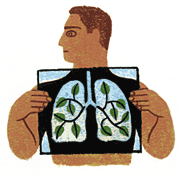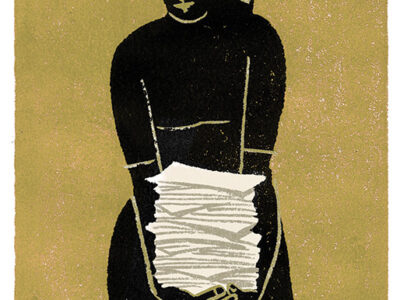
At first John Palko W’76ignored the pins-and-needles feeling in his fingertip. He was too busy with his career as a warehouse designer to be bothered by it. But when his fingertip started to turn blue, he decided he had better go see the doctor. Three months of testing led to a diagnosis of scleroderma, a life-threatening autoimmune disease that was hardening the blood vessels in his lungs. Before long he was on oxygen 24 hours a day, with a catheter inserted in his chest to deliver medicine. His only hope, as he lay curled up in a ball in the bed, was a double-lung transplant—a procedure that only two hospitals in the country were willing to perform.
“Everybody else said, ‘You have a disease that will kill you.’ Boy, did I show them.”
That was three years ago. Today, at age 47, Palko is learning how to walk and breathe all over again. But he has survived a transplant, and his scleroderma is in remission. In honor of that achievement, he got to carry the Olympic Torch when it passed through Orlando, Florida, on December 7.
At the time of his operation at a Pittsburgh hospital, only 60 double-lung transplants for scleroderma patients had been performed in the world, and only 12 of the patients had survived.
“Lungs are a hard one, because it’s like sewing in jello,” Palko says. “They are very fluffy. It’s not like getting a pair of kidneys that are solid organs and have places to stitch into.”
Palko underwent 12 hours of surgery followed by nine months of recuperation in a hospital bed. He had to be resuscitated four times during that hospital stay and had titanium bronchial stems inserted into his airways to prevent them from collapsing.
The doctors told him he needed to set goals to get up and walk, and so he told them, “‘I want to carry the Olympic torch.’ They laughed at me and said, ‘Don’t set goals you can’t possibly achieve, because you will be grossly disappointed.’ So I did it just to show them I could do it.”
Palko gradually “blew off” his wheelchair and walker, but still relies on a seat cane to get around. The many months he spent bedridden gave him osteoporosis and the bones of a 90-year-old, which he is working to rebuild. He can’t return to his business, because it requires too much air travel and he must avoid crowded areas where he could be exposed to viruses.
As a result, he says, “I’m not quite sure what I’m going to do when I grow up. Right now I’m putting all my efforts into getting back to a normal state, and it’s frustratingly slow. But I’ve made major strides in a year. They had to carry me on the airplane when I came home [from the hospital].”
Palko hopes his survival story will encourage other people to be organ donors. “Without somebody donating an organ, I wouldn’t be here today.”




